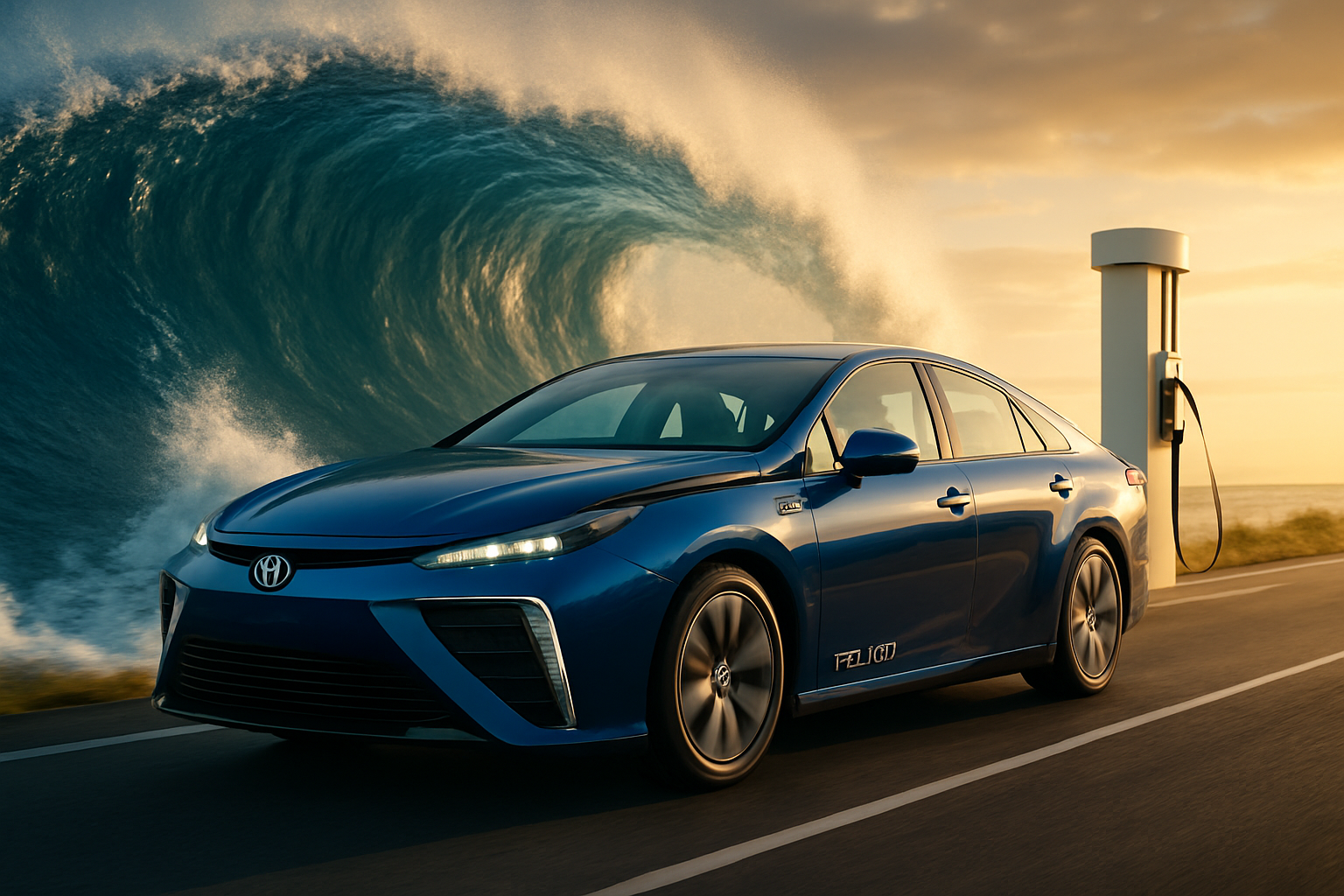Hydrogen Fuel Cells: The Automotive Industry's Silent Revolution
Picture yourself cruising down the highway, the only emission from your vehicle being pure water vapor. This isn't a scene from a futuristic movie; it's the reality of hydrogen fuel cell vehicles. As the automotive industry grapples with environmental concerns and the need for sustainable transportation, hydrogen fuel cells are emerging as a promising alternative to traditional combustion engines and even electric batteries.

A Brief History of Hydrogen in Automobiles
The concept of using hydrogen as a fuel source isn’t new. In fact, it dates back to the early 19th century when Swiss inventor François Isaac de Rivaz created an internal combustion engine powered by hydrogen. However, it wasn’t until the late 20th century that automotive manufacturers began seriously exploring hydrogen fuel cells as a viable option for passenger vehicles.
In the 1960s, General Motors developed the Electrovan, the world’s first hydrogen fuel cell vehicle. While it never made it to production, it laid the groundwork for future developments. The 1990s saw a resurgence of interest in hydrogen technology, with major automakers like Toyota, Honda, and Hyundai investing heavily in research and development.
The Current State of Hydrogen Fuel Cell Technology
Today, hydrogen fuel cell vehicles are no longer just prototypes. Several models are available in select markets, with more on the horizon. The Toyota Mirai, Honda Clarity Fuel Cell, and Hyundai Nexo are leading the charge, offering consumers a glimpse into a hydrogen-powered future.
These vehicles boast impressive specifications. For instance, the latest Toyota Mirai can travel up to 402 miles on a single tank of hydrogen, rivaling many gasoline-powered cars. Refueling takes just five minutes, addressing one of the main criticisms of battery electric vehicles – long charging times.
Infrastructure: The Key to Widespread Adoption
Despite the technological advancements, the widespread adoption of hydrogen fuel cell vehicles faces a significant hurdle: infrastructure. Unlike electricity, which is readily available everywhere, hydrogen fueling stations are scarce. As of 2021, there were only about 550 hydrogen stations worldwide, with the majority concentrated in Japan, South Korea, and California.
However, this is changing. Governments and private companies are investing in hydrogen infrastructure. Germany plans to have 400 stations by 2023, while Japan aims for 1,000 by 2030. In the United States, California leads the way with ambitious plans to expand its network of hydrogen fueling stations.
Environmental Impact and Sustainability
One of the most compelling arguments for hydrogen fuel cells is their potential for zero emissions. When powered by hydrogen produced from renewable sources like solar or wind energy, these vehicles can truly be carbon-neutral. However, it’s important to note that currently, most hydrogen is produced from natural gas, which does have a carbon footprint.
The automotive industry is working on developing more sustainable methods of hydrogen production. Green hydrogen, produced through electrolysis powered by renewable energy, is seen as the holy grail of clean transportation. As these production methods become more efficient and widespread, the environmental benefits of hydrogen fuel cell vehicles will only increase.
Challenges and Criticisms
Despite their potential, hydrogen fuel cell vehicles face several challenges. Critics argue that the process of producing, compressing, and transporting hydrogen is inefficient compared to using electricity directly in battery electric vehicles. There are also safety concerns, although manufacturers have made significant strides in addressing these issues through robust safety systems.
The high cost of fuel cell technology remains another barrier. However, as with any new technology, prices are expected to decrease as production scales up and becomes more efficient.
The Role of Hydrogen in the Future of Transportation
While battery electric vehicles have taken the lead in the transition away from fossil fuels, many experts believe that hydrogen fuel cells will play a crucial role in the future of transportation, especially for long-haul trucking, buses, and other heavy-duty vehicles where battery weight becomes a significant issue.
Some automakers are exploring hybrid systems that combine battery electric and hydrogen fuel cell technologies, offering the best of both worlds. This approach could provide a stepping stone towards wider hydrogen adoption while leveraging existing electric vehicle infrastructure.
Beyond Passenger Vehicles
The potential of hydrogen fuel cells extends beyond passenger cars. The technology is being explored for use in trains, ships, and even aircraft. In 2018, Germany introduced the world’s first hydrogen-powered train, and several shipping companies are developing hydrogen-powered cargo vessels.
In the realm of aviation, where the weight of batteries poses a significant challenge for electrification, hydrogen is seen as a potential game-changer. Several startups and established aerospace companies are working on hydrogen-powered aircraft, which could revolutionize air travel in the coming decades.
Conclusion: A Piece of the Clean Energy Puzzle
As we stand on the brink of a transportation revolution, it’s clear that there’s no one-size-fits-all solution to our energy and environmental challenges. Hydrogen fuel cell technology, with its rapid refueling times, long range, and potential for zero emissions, offers a compelling alternative to both traditional combustion engines and battery electric vehicles.
While challenges remain, the progress made in recent years is undeniable. As infrastructure expands and technology improves, we may soon see hydrogen fuel cell vehicles playing a significant role in our transition to a cleaner, more sustainable transportation future. The silent revolution of hydrogen fuel cells is gaining momentum, promising a future where the only thing coming out of our tailpipes is pure, clean water.





